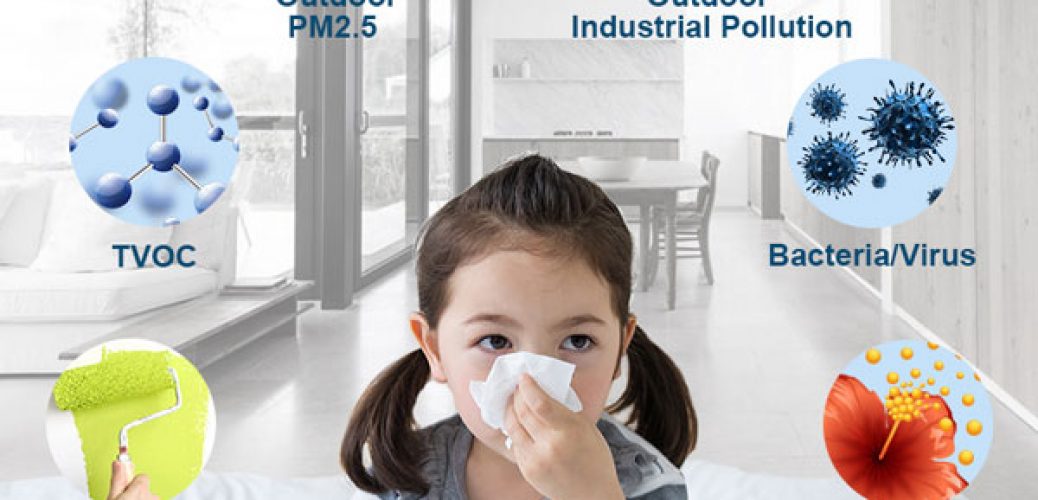How to improve classroom air quality?
The classroom is the main place for students to study every day. The air quality in the classroom is directly related to the students’ physical and mental health and learning efficiency. Their bodies are in the growth and development stage, and their immunity to pollutants is much weaker than that of adults. Their learning environment is even better. It deserves special attention. At the beginning of primary and secondary schools, the “Haze Prevention Strategy” summarized classroom air problems and provided some cases of German schools for the reference of education departments and parents.
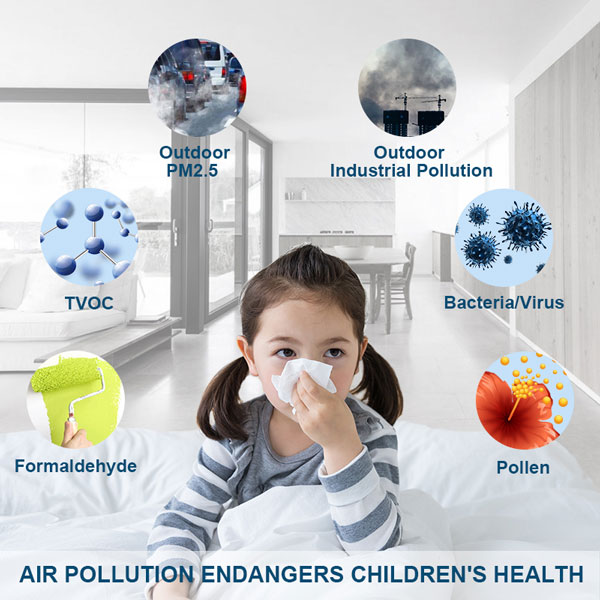
1. Four Harmful Classroom Air
- The infiltration of outdoor PM2.5 is harmful☆☆☆☆
- High CO2 concentration is harmful☆☆
- The spread of infectious bacteria is harmful☆☆☆
- Formaldehyde pollution hazards☆☆☆☆
Outdoor PM2.5 infiltration hazards Star rating: ☆☆☆☆
In a haze day, even if the doors and windows are closed tightly, small PM2.5 dust particles can still infiltrate the classrooms through the doors and windows and the gaps in the building. Incomplete tests have shown that the PM2.5 concentration in the classroom is slightly lower than that of the outdoor by about 10% to 20%. This is because all the students act as “human flesh purifiers.” The preventive measures of students against PM2.5 are almost equal to zero. Because PM2.5 particles are extremely small, the human body has no ability to filter and block them. The particles are easily swallowed by alveolar phagocytic cells and enter the bronchus. Therefore, PM2.5 can cause great damage to the human respiratory system and easily cause asthma, bronchitis, etc. disease.
High CO2 concentration harms star rating: ☆☆
Popular science tips: The outdoor CO2 concentration is about 400ppm, and a person exhales about 15 liters of CO2 per hour when sitting still. In haze days, winter and summer, classroom doors and windows are usually closed, and the indoor CO2 concentration increases. The CO2 concentration in the classrooms of 35 students reaches 2000~3000ppm. Higher CO2 concentration causes students to produce symptoms such as chest tightness, dizziness, distraction, drowsiness, and memory loss. Therefore, when the teacher reports that your children are always going to go in school, it is likely to be affected by bad CO2.
According to the results of a student attention test in Austria, when the CO2 concentration increases from 600-800ppm to 3000ppm, the student’s learning efficiency plummets from 100% to 90%. The German Environmental Protection Agency recommends that when the concentration is less than 1000ppm, the hygienic condition is reasonable, when the concentration is 1000-2000ppm, attention should be paid to and ventilation measures should be taken. When the CO2 is greater than 2000ppm, the air hygiene condition is unacceptable.
Infectious germs spread hazard Star rating: ☆☆☆
The classrooms are densely crowded and the humidity is high, and bacteria can easily breed and spread, such as mumps, chickenpox, influenza, bacillary dysentery, etc.; campuses are prone to outbreaks of communicable diseases from March to April and October to December every year . In 2007, Shanghai carried out air monitoring in 8 elementary and middle schools in Fengxian District, and found that the total number of air bacteria in the classroom was 0.2/cm2 before class, but rose to 1.8/cm2 after the 4th class. If the classroom is poorly ventilated, and a large number of germs produced by students coughing and sneezing will accumulate and spread, one person will get sick and many people will be infected.
Formaldehyde pollution hazard star rating: ☆☆☆☆
If it is a newly built or remodeled classroom, the building decoration materials and new desks and chairs will volatilize harmful gases, including formaldehyde and benzene. Decoration pollution is very harmful to the health of students, and it is easy to induce blood diseases in children, such as leukemia; at the same time, it increases the incidence of asthma; and affects the intellectual development of students. In September 2013, the Wenzhou Environmental Supervision Detachment randomly inspected 88 classrooms in 17 early childhood education institutions in Wenzhou, 43 of which exceeded the standards for formaldehyde and total organic volatiles, that is, 51% of the classrooms had unqualified air quality.
2. German experience in classroom air hygiene
Some time ago, there were often news that parents sent air purifiers to school classrooms. Such a move can slightly reduce the damage of some dirty air to students; however, to solve the four major hazards mentioned above, this is just a drop in the bucket, and it is far from enough. . To solve the four hazards of classroom air, for PM2.5, it seems that doors and windows should be closed tightly, and for the other three hazards, doors and windows should be opened to increase ventilation. How to solve this contradiction? The experience of German schools is that the effect of window ventilation is affected by the wind direction and speed, and the effect cannot be guaranteed, and window ventilation in winter and summer is also restricted; therefore, to improve classroom air quality, it is necessary to actively and reasonably control the supply and exhaust air, so as to supply sufficient air. Amount of fresh air, exhaust the turbid indoor air. There are mainly two types of mechanical ventilation devices installed in the classroom:
Centralized ventilation equipment.
It is suitable for newly-built schools, and the ventilation volume can meet the fresh air of 17~20 m 3;/h for each student. The big guy on the roof of the cover picture is the centralized ventilation equipment. The white round pipes at the top of the photo below are the fresh air supply ducts and long air supply openings in the classroom corridors.
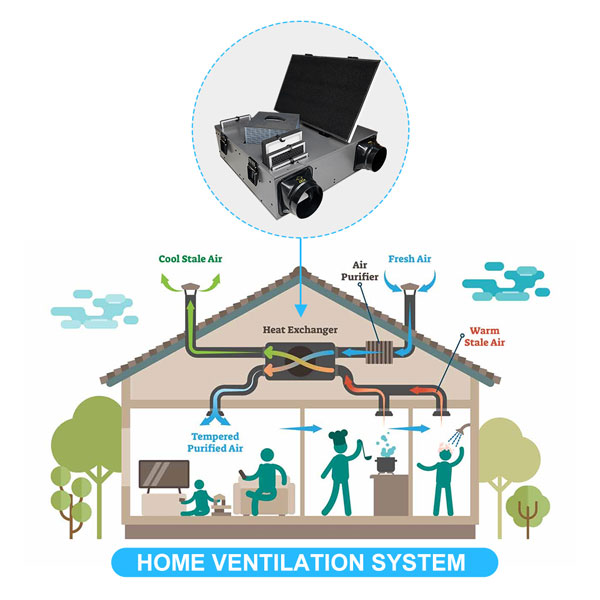
Decentralized ventilation equipment
The use of decentralized ventilation equipment is suitable for renovating schools, and each classroom is independently ventilated. The light-colored squares on the outer wall in the picture below are decentralized ventilation equipment.
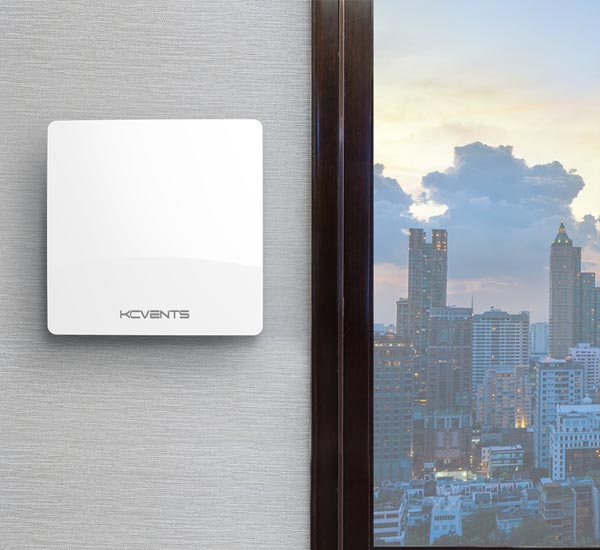
Some schools in Germany also have air quality detection and alarm devices, and the air volume can also be adjusted according to the CO2 concentration. In addition, most of the ventilation installations in Germany also have heat recovery devices, with a heat recovery efficiency of more than 70%, and great emphasis on energy saving and emission reduction.
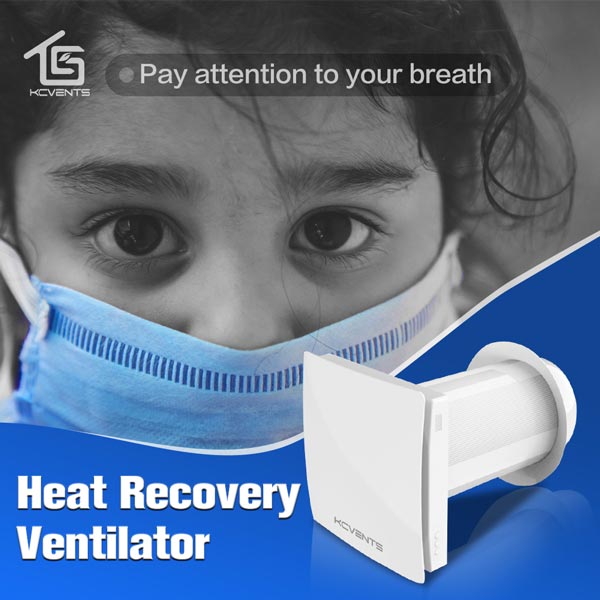
Welcome visit our website to know more about our product. Alibaba
